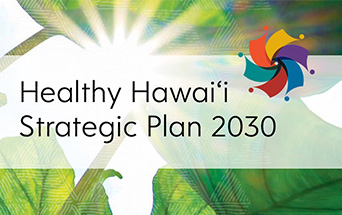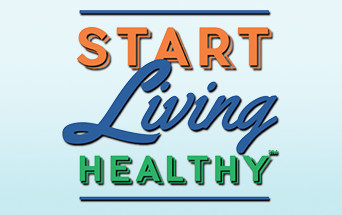Stroke
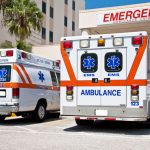 Stroke is the #1 cause of chronic disability and and the third leading cause of death in Hawaiʻi. On average, one person in the U.S. has a stroke every 40 seconds and someone dies from stroke every 3½ minutes. Unlike heart disease, which is more common in men, it is estimated that about 55,000 more women than men have strokes in the U.S. each year.
Stroke is the #1 cause of chronic disability and and the third leading cause of death in Hawaiʻi. On average, one person in the U.S. has a stroke every 40 seconds and someone dies from stroke every 3½ minutes. Unlike heart disease, which is more common in men, it is estimated that about 55,000 more women than men have strokes in the U.S. each year.
What is a Stroke?
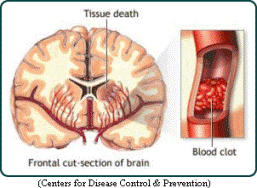 A stroke occurs if the flow of oxygen-rich blood to a portion of the brain is blocked. Without oxygen, brain cells start to die after a few minutes. Sudden bleeding in the brain also can cause a stroke if it damages brain cells. The two main types of stroke are ischemic and hemorrhagic. Ischemic is the more common type of stroke.
A stroke occurs if the flow of oxygen-rich blood to a portion of the brain is blocked. Without oxygen, brain cells start to die after a few minutes. Sudden bleeding in the brain also can cause a stroke if it damages brain cells. The two main types of stroke are ischemic and hemorrhagic. Ischemic is the more common type of stroke.
An ischemic stroke occurs if an artery that supplies oxygen-rich blood to the brain becomes blocked. Blood clots often cause the blockages that lead to ischemic strokes.
A hemorrhagic stroke occurs if an artery in the brain leaks blood or ruptures (breaks open). The pressure from the leaked blood damages brain cells. High blood pressure and aneurysms are examples of conditions that can cause hemorrhagic strokes. Aneurysms are balloon-like bulges in an artery that can stretch and burst.
Another condition that’s similar to a stroke is a transient ischemic attack, also called a TIA or “mini-stroke.” A TIA occurs if blood flow to a portion of the brain is blocked only for a short time. Thus, damage to the brain cells isn’t permanent (lasting). Like ischemic strokes, TIAs often are caused by blood clots. Although TIAs are not full-blown strokes, they greatly increase the risk of having a stroke. If you have a TIA, it’s important for your doctor to find the cause so you can take steps to prevent a stroke. Both strokes and TIAs require emergency care.
Learn the Signs of Stroke “BE FAST”
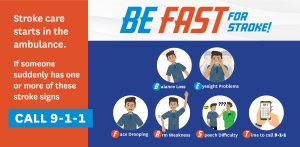 Some new treatments can reduce stroke damage if patients get medical care soon after symptoms begin. Learn to recognize the signs and symptoms of a stroke, because time lost is brain lost. If you or someone you are with begins to have any of these symptoms, call 9-1-1 right away.
Some new treatments can reduce stroke damage if patients get medical care soon after symptoms begin. Learn to recognize the signs and symptoms of a stroke, because time lost is brain lost. If you or someone you are with begins to have any of these symptoms, call 9-1-1 right away.
- Sudden numbness or weakness of face, arm, or leg, especially on one side of the body
- Sudden confusion or trouble speaking or understanding speech
- Sudden trouble seeing in one or both eyes
- Sudden trouble walking, dizziness, or loss of balance or coordination
- Sudden severe headache with no known cause
You may have one or several of these symptoms. Seek help immediately.
Visit https://livinghealthy.hawaii.gov/stroke/
To Prevent Stroke
You can help prevent stroke by making healthy choices and managing any medical conditions you might have. Live a Healthy Lifestyle…
EAT A HEALTHY DIET.
Choosing healthy meal and snack options can help you avoid stroke and its complications. Be sure to eat plenty of fresh fruits and vegetables.
Eating foods low in saturated fat and cholesterol and high in fiber can help prevent high blood cholesterol. Limiting salt or sodium in your diet can also lower your blood pressure.
For more information on healthy diet and nutrition, visit the CDC’s Nutrition website.
MAINTAIN A HEALTHY WEIGHT.
Being overweight or obese can increase your risk for stroke. To determine whether your weight is in a healthy range, doctors often calculate a number called the body mass index (BMI). Doctors sometimes also use waist and hip measurements to measure a person’s excess body fat. If you know your weight and height, you can calculate your BMI at CDC’s Assessing Your Weight website.
BE ACTIVE.
Physical activity can help you maintain a healthy weight and lower cholesterol and blood pressure. The Surgeon General recommends that adults should engage in moderate-intensity exercise for at least 30 minutes on most days of the week.
For more information, visit the CDC’s Physical Activity website.
DON’T SMOKE.
Cigarette smoking greatly increases your risk for stroke. So, if you don’t smoke, don’t start. If you do smoke, quitting will lower your risk. Your doctor can suggest ways to help you quit.
For more information about tobacco use and quitting, visit the CDC’s Smoking and Tobacco Use website.
LIMIT ALCOHOL USE.
Avoid drinking too much alcohol, which causes high blood pressure. For more information, visit CDC’s Alcohol and Public Health website.
Prevent or Treat Your Medical Conditions
If you have high cholesterol, high blood pressure, diabetes, or heart disease, there are steps you can take to lower your risk for stroke.
- HAVE YOUR CHOLESTEROL CHECKED. Your health care provider should test your cholesterol levels at least once every five years. Talk with your doctor about this simple blood test.
- MONITOR YOUR BLOOD PRESSURE. High blood pressure has no symptoms, so be sure to have it checked on a regular basis.
- MANAGE YOUR DIABETES. If you have diabetes, closely monitor your blood sugar levels. Talk with your health care provider about treatment options.
- TAKE YOUR MEDICINE. If you’re taking medication to treat high cholesterol, high blood pressure, or diabetes, follow your doctor’s instructions carefully. Always ask questions if you don’t understand something.
- TALK WITH YOUR HEALTH CARE PROVIDER. You and your doctor can work together to prevent or treat the medical conditions that lead to heart disease. Discuss your treatment plan regularly and bring a list of questions to your appointments.
To Learn More
American Stroke Association – About Stroke
National Stroke Association – Warning Signs of Stroke


